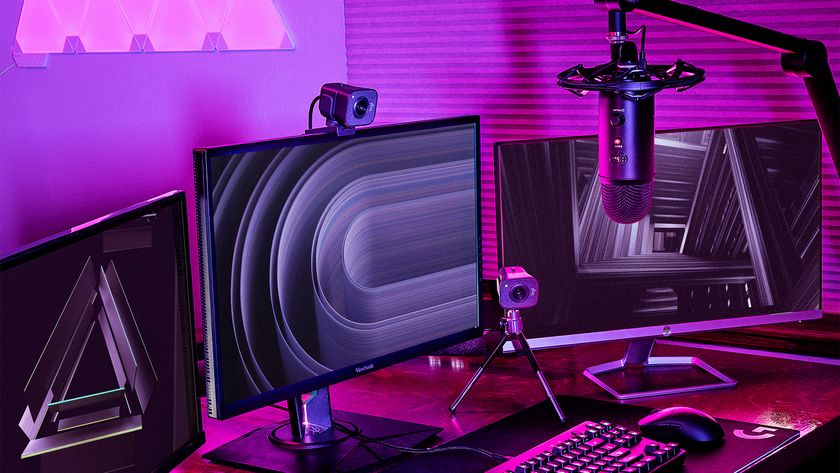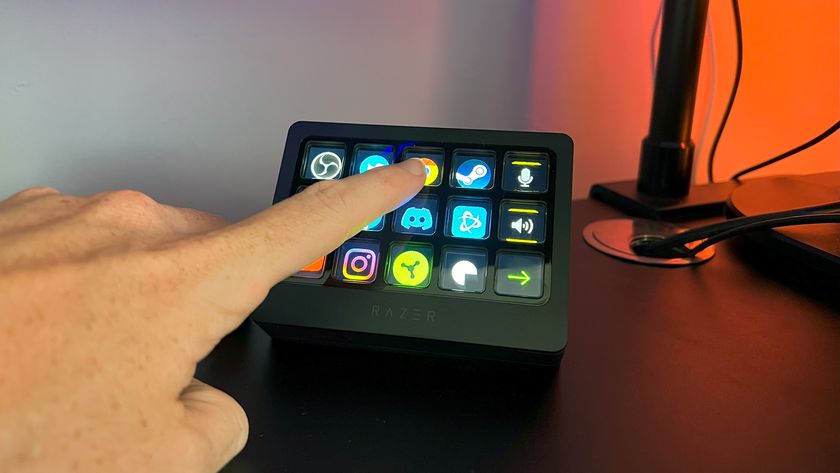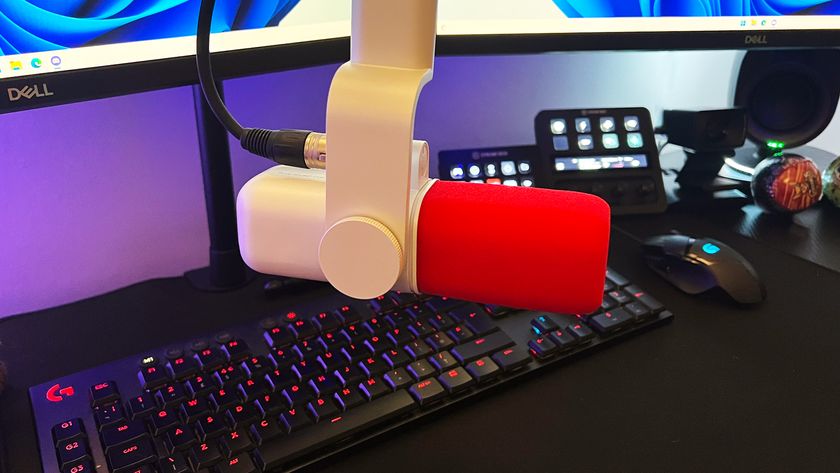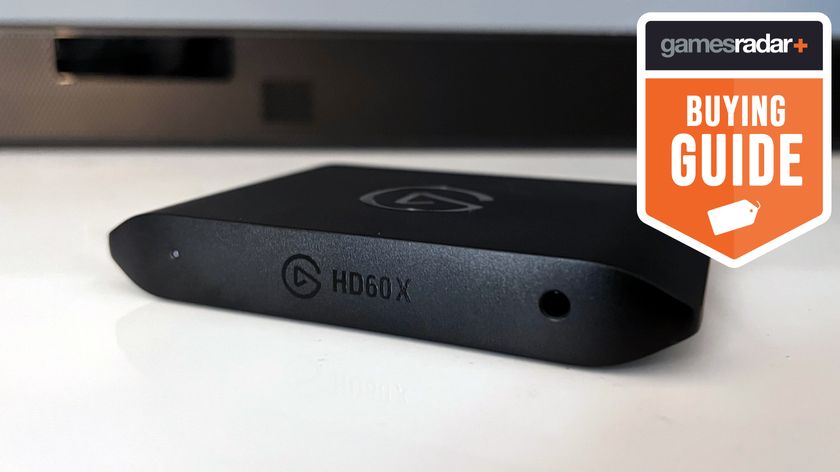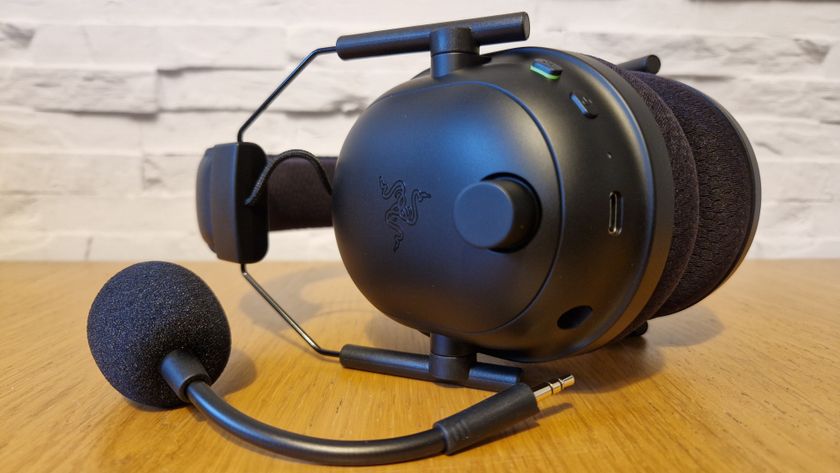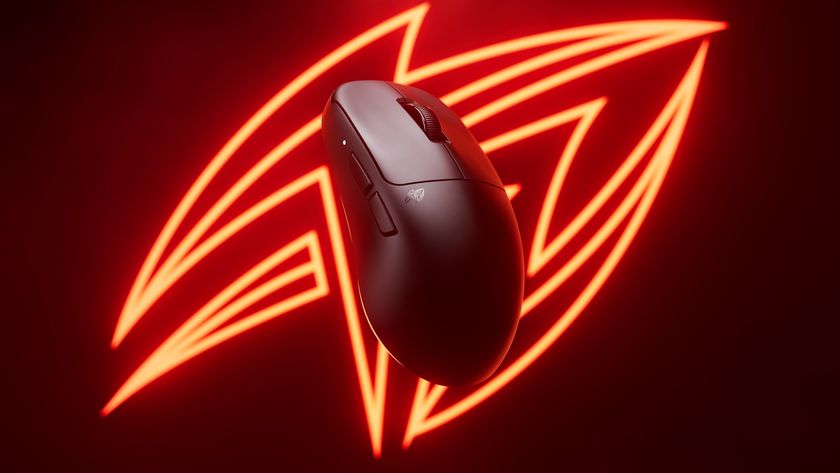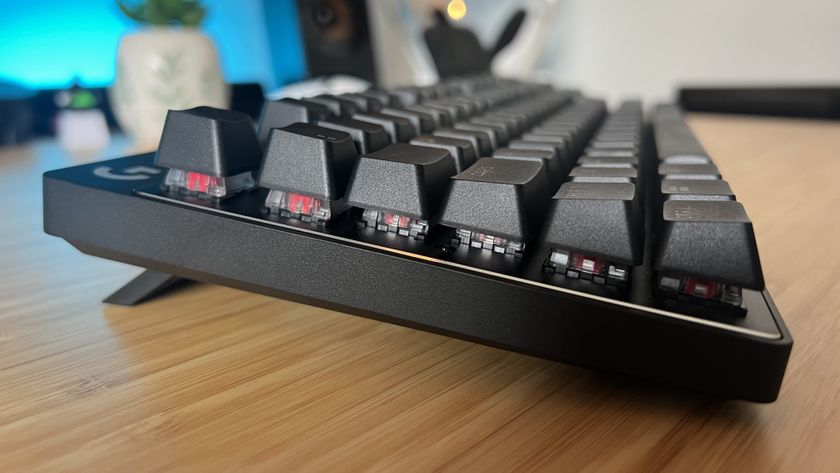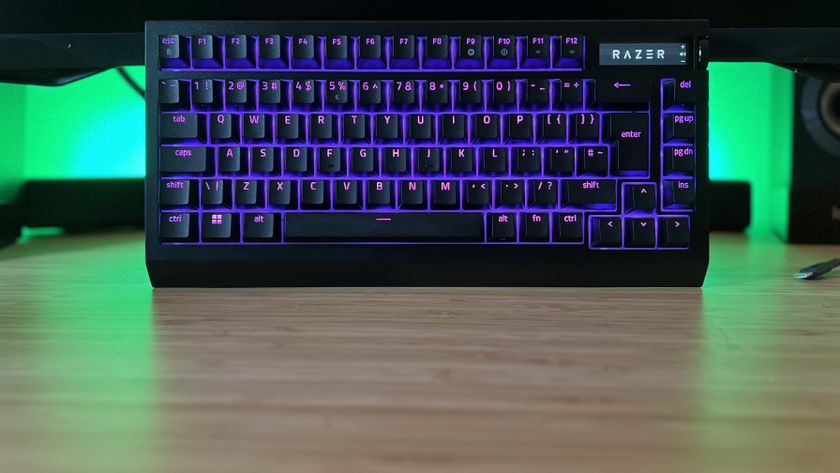Best streaming mixers in 2025: Master your live audio like a pro
The best streaming mixers will make your lives scream with production value - as loudly as you want them to.
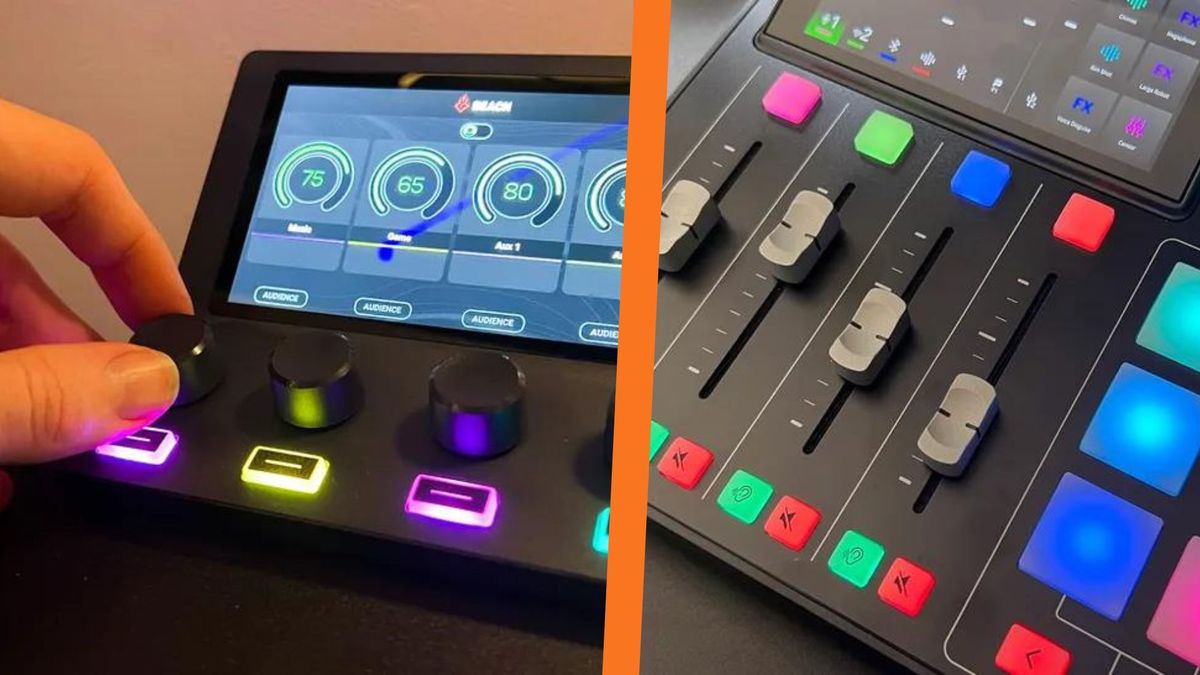
The best streaming mixers and audio interfaces will make managing your live-stream audio a blast. Professional audio quality is probably one of the most vital things for any gaming content on Twitch, YouTube, or whichever platform you broadcast to, so having dedicated hardware to help you control it can make a massive difference. Want to fade out your background music as your next round starts? Want to have programmable sound effects at the push of a button? Then read on, budding streamers.
Like a lot of the best gear for streaming, audio mixers don't come cheap. That's why, now that there's a solid selection of them on the shelves, we're here to give you our expert advice. We've tested plenty of audio interfaces designed for streaming, and sometimes even more demanding tasks. We know which ones will make your life easier, and which are better left alone because they'll cause you more headaches you don't need. The first audio source you'll need to manage is your own microphone - and arguably this is the most important first step when you're buying. Do you have an XLR mic, or a USB-C one? This could determine which mixer you should grab.
Of course, game audio, the volume of your partners who are guesting on your stream, and any background music and sound effects are important too. With a mixer on your desk, managing these things will be easier than ever, and your streams will be propelled to the next level. It's worth mentioning that some of the best streaming mixers can also double as streaming controllers, so it's worth doing your research to know where you can save yourself some cash if you only need one of those things.
The quick list
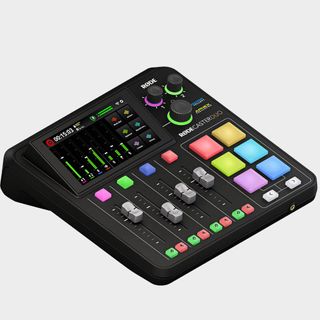
Rode's smaller version of the RodeCaster Pro II packs all of the same power into a smaller footprint, and it's by far and away the best mixer overall.
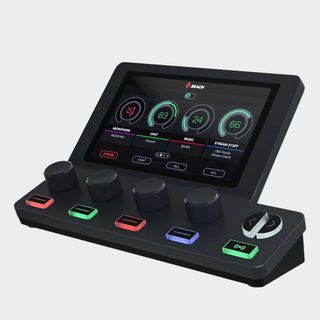
BEACN's Mix Create is excellent for full PC audio control, but its software makes it one of our go-to recommendations. Drag-and-drop never looked so good.
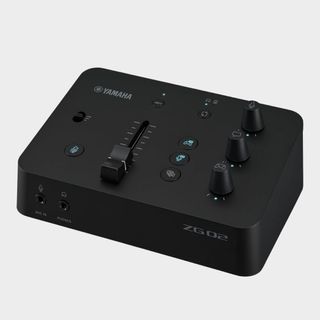
If you're streaming gameplay from a PS5, it doesn't get easier than the ZG02's simple USB-C connection. This isn't as powerful as a lot of the options on this list, but for PS5 it'll do the job.
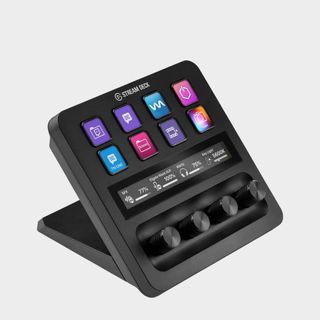
Elgato's Stream Deck+ is one of the more versatile options on this list, and its all-in-one package makes it a brilliant option for the majority of Twitch streamers.
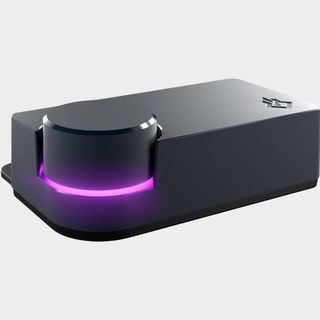
If you have one PC for running your games, and another for all your broadcasting applications, it can be a nightmare to get audio from one PC to the other. The BEACN Studio's double USB-C ports will fix that.
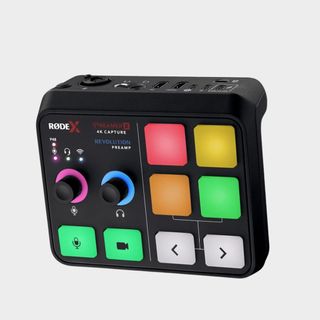
The Streamer X is one of the jack-of-all-trades of the streaming and content creation market. Thanks to its capture card abilities, this might be the go-to for multi-platform streams.
Show more ↓
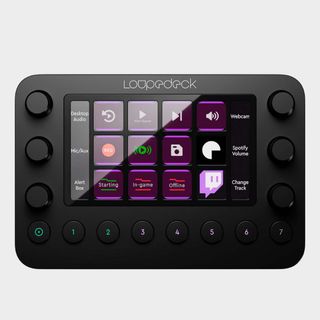
If you're a streamer who also spends a lot of time video editing, Loupedeck might be the brand to choose. With simple Adobe plugins, this device could do you favors.
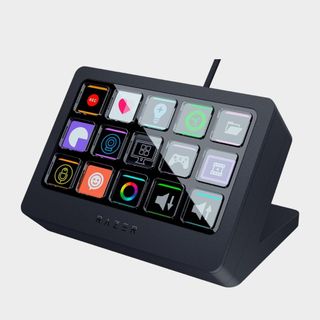
If you're integrated into Razer's Synapse ecosystem, this is the controller that will play ball with it. Keep reading to find out why we'd recommend this over Razer's dedicated mixer.

I've been using content creation gear for just shy of a decade now, and as I've done more and more livestreaming, mixing audio has become a big priority. I'm constantly on the hunt for audio mixers that are powerful enough to let me be an audiophile when I go live, so I love comparing them all in this guide. I spent my university years locked in a radio studio (by choice), so audio hardware like this has always been a favorite of mine.
The best streaming mixer overall








Specifications
Reasons to buy
Reasons to avoid
The RodeCaster Duo is by far the best audio interface out there for streamers, and it's what we'd recommend over the popular GO:XLR devices. The two are clearly similar, with four physical faders that are immediately coveted for microphone, game, music, and chat audio levels. That said, the GO:XLR and its mini counterpart may not see support going forward, since question marks still linger over the team that made them actually still being employed.
Regardless, Rode's smaller version of the RodeCaster Pro II is all you'll ever need for streaming, podcasting, or recording music. It has all the power people have come to know from other RodeCasters, but its smaller footprint makes it ideal for streaming.
✅ You want a professional-grade mixer: If you won't settle for less than the professional audio quality of the best streamers, this is what you need.
✅ You're considering a GO:XLR: With support promised and more up-to-date connectivity, this is a much better option to go for in 2024.
✅ You have a single or dual PC setup: two USB-C ports make this the perfect interface for creators with a dedicated streaming PC, or an all-in-one machine.
❌ You don't need the best: If you're not a professional, or an enthusiast who wants to splash out, this is going to be overkill for you. Hobbyists don't need to spend this much.
❌ You stream PS5 gameplay: There are ways around it, but if you're planning on plugging a USB-C to USB-C cable between this and a PS5, look elsewhere.
Design: If you've seen Rode's overpowered audio mixers before, you'll immediately recognize the classic look and feel of the Duo. It has four physical faders, two additional virtual faders, six SMART pads, all of the brand's famous effects, and mute and listening buttons that are easily used. In terms of physical faders, it doesn't get better than this, with each channel you can assign in the position you'd like having a professional feel that's reminiscent of the fanciest radio studios.
Features: As well as an excellent, user-friendly design, the Duo has some of the best connectivity of any mixer on the shelves today. Two USB-C inputs mean you can integrate this easily into a single or double PC setup. This gives you the option of a secondary USB audio output which can be so, so helpful for distinguishing your game audio from music. The helpful USB chat output is a ready-to-go discord audio channel that has the slightly confusing mix-minus feature already assigned to it. On top of that, the brand's SMART pads can be assigned to help you with switching stream scenes, applying audio effects, or playing sound effects.
You also have outputs on the back of the Duo for hooking up a set of speakers, and multiple headphone jack options as well. This hefty device comes not just with one, but with two XLR inputs, meaning if you're a podcaster as well as a streamer, you'll more than get your money's worth.
Performance: This is quite simply all the streaming mixer you could ever need. Full warning - all this power comes with some learning, and Rode's interface, while useful, isn't always the easiest to wrap your head around. Once you learn all the fine details though, you'll be obsessed with mixing the perfect audio if you aren't already.
I use the Duo in a one PC setup, and beyond some mixing wobbles and another USB-C controller getting in its way, there are no flaws I can really list for PC streaming. I wish its USB-C outs were compatible with the PS5, but that is something Rode has told me it's trying to work on. Whether its background music, controlling your chat audio, or applying ducking for that intimate, professional feel, this is the perfect streaming mixer.
Admittedly, it comes at a price, and not everyone needs to spend this much to get a great audio interface. If you're serious about your audio though, and want to take your content to the next level, don't settle for less.
- Read more: RodeCaster Duo Review
The best mixer and software combination





Specifications
Reasons to buy
Reasons to avoid
The BEACN Mix Create is one of the best mixers on the market, make no mistake. As simple and efficient as its small footprint is, its four volume dials are made all the better by some of the best audio software available. This Canadian brand understands that controlling audio on the fly can be a nightmare, so they went about designing easy-to-use drag-and-drop software that makes it more fun. Perhaps the biggest draw of this software? Bespoke sub-mixes for your audience and your own ears.
✅ You want unlimited routing capabilities: You won't be limited for sources with this mixer, so there is no need to compromise.
✅ You stream competitive gameplay: With different mixes for your audience and yourself, you'll never need to lose out on all-important game volume ever again.
✅ You use a USB mic: This doesn't have XLR support, so USB mics are better suited.
❌ You have an older CPU: We found that BEACN's software can be taxing for older CPUs, so keep that in mind.
❌ You dislike finicky setup processes: It does take a while to get BEACN Mix Create set up and working since it means routing all of your PC's audio through it.
Design: For how powerful it is, the BEACN Mix Create has an impressively small footprint on a desk, giving you ample room for a controller alongside it, or any other gadgets and gismos you might need for creating content. It stands just a little wider than its full-color 5-inch display and is available in white or black. Below that rests four volume knobs used to control its audio channels, and directional buttons to the right allow you to switch to different pages if you need more than four channels. Perhaps most usefully, the buttons below each volume dial let you switch between your personal mix, and what your audience hears. This is a huge strength of Mix Create and something that was missing from all audio interfaces before it.
The whole device operates through a single USB-C connection, which means if you're using an XLR microphone, you might be better off elsewhere with an interface that will work for you. Connectivity could be better, but for the right loadout of streaming equipment, this might be all you need.
Features: What really runs the Mix Create show though, is BEACN's intuitive software. Admittedly, you will need to allow it front-and-center access to all of your PC's audio, but if you're willing to run things this way, you can harness the full potential of this little gadget.
If you've used Sonar software from SteelSeries, you'll be familiar with how the BEACN studio software works - you have the ability to drag and drop audio sources directly onto the channels you want them on the corresponding Mix Create display. You also have the ability to add effects and otherwise route audio sources however you'd like.
Performance: While admittedly a tad CPU-intensive, BEACN's software is one of the best audio tools we've tested for managing stream sounds. In particular, we found that being able to differentiate between personal and chat mixes was a standout feature. With so many games touting different volume levels, it can be useful to be able to boost it for yourself without completely ruining the balance of your stream mix - especially in competitive games where you don't want to lose out on sound cues.
It is a bit of a shame that BEACN's best interface doesn't have XLR capabilities, but in the right hands, this is one of the most powerful streaming mixers on the shelves at the moment.
- Read more: BEACN Mix Create review
The best mixer for PS5







Specifications
Reasons to buy
Reasons to avoid
The Yamaha ZG02 isn't our favorite streaming mixer, and our review score reflects that. This device doesn't have a lot of character, and its functionality is pretty limited thanks to software that feels half-baked and a build quality that leaves a lot to be desired. Still, its simple plug-and-play compatibility with PS5 is commendable since some of the best mixers on this list struggle to work with Sony's console. For that reason, it's still worth buying.
✅ You stream PS5 gameplay: The best thing about this mixer is its PS5 compatibility.
✅ You don't care too much about background music or channel numbers: This isn't the most powerful mixer on this list by a long shot, so don't expect the world.
✅ You use an XLR mic: This even has 48V phantom power, which is useful for more expensive XLR microphones.
❌ You use a lot of audio sources: This device is limited in the number of sources you can route to each dial, so look elsewhere for greater control.
❌ You don't have the patience for poor setup instructions: The instructions that came with this weren't clear, or worded well.
Design: The ZG02 follows on from the brand's ZG01, and actually scales back a few features in an attempt to take up less space on a gaming desk. What we have then, is a plastic black box that feels hollow to the touch, and doesn't boast robust build quality with buttons that create an echo when clicked. The solitary fader fine-tunes the gain level of the XLR microphone input and corresponds with the three more general gain settings toggle to its left. There's a mute button, an echo button, and two effects switches for toggling different sounds on your game and mic audio.
Up at the top, you'll find a helpful 48V phantom power button, which gives this device legs for those who own more expensive microphones like the Shure SM7dB. Also included is a toggle button for switching between headphone and speaker-out connections.
The device is rounded out by its three volume knobs, one for game audio, one for chat, and one for live microphone monitoring.
Features: Around the back, however, is where this mixer redeems itself. It features two USB-C inputs, meaning you can connect up a gaming PC, through which you'll control your stream and the device, and then another USB-C connection you can use to connect a games console like the PS5 or a Nintendo Switch. This seamlessly connected to the PS5's audio, making it easy to stream console gameplay and configure its audio using the mixer.
Unfortunately, its software feels frustratingly half-baked and takes special care to add in-depth menus for audio effects rather than quality-of-life features that would be useful to a wider range of streamers. Its software, the terminology it uses, and the setup manuals make the initial setup a headache too.
Performance: From the above, you'll see why this isn't our favorite device. That said, it does have redeeming qualities - most notably its XLR input and 48V phantom power, and its flawless compatibility with PS5. Streaming PS5 gameplay was effortless with this thing, and while it is a real shame there's not a fourth volume dial you can dedicate to background music, a lot of console streamers won't require more than this offers.
- Read more: Yamaha ZG02 review
The best for most Twitch streamers





Specifications
Reasons to buy
Reasons to avoid
The Elgato Stream Deck + is another versatile tool for any content creator to have on their desk. It takes the innovative functionality of the Stream Deck and adds audio control dials, along with wider uses for controlling other bits of Elgato kit. As a controller and mixer rolled into one, this is probably the best mixer for most streamers, since they don't need to splash out on two bits of hardware if they opt for this.
✅ You use Elgato gear: Since this can control a lot of other bits of Elgato hardware, it's the perfect hub for folks who are already bought into the ecosystem.
✅ You want a stream controller as well as a mixer: With eight keys and a touch bar, this thing does a lot more than just audio mixing.
✅ You use an XLR mic: Thanks to a new add-on, the Stream Deck + now has compatibility with LR devices too, making it even more viable for audio enthusiasts.
❌ You want a bespoke audio interface: You know what they say about a jack-of-all-trades
❌ You prefer faders to dials: If you want to feel like a late-night radio DJ, this probably isn't the mixer for you.
Design: On its top half, the Stream Deck + looks like its older sibling, touting some touch keys that can be used to switch scenes with ease. Below, you'll find a touch bar that displays information about the device's four dials, which can be used for additional interactions. As a mixer, the four dials are the star of the show. They have a grippy machined surface making them feel precise to use. We'd have liked to see some backlighting on these to make them stand out a bit clearer when in a darker room, but the build quality is hard to argue with.
Features: You'll control everything about the Stream Deck + in the same way as other Stream Decks, with intuitive drag-and-drop software in the Elgato Camera Hub. Because this is a catch-all application for pretty much all of Elgato's streaming devices now, it means everything can be controlled by the Stream Deck or Stream Deck+.
Performance: For managing your entire stream when live, the Deck + is a great option. Four dials give you enough leeway for controlling audio sources, and the versatility on offer for Elgato's wider consumer base makes it nice and viable. Now, thanks to some newly added components the brand sells separately, you can even use it as an XLR audio interface. Overall, we have a versatile controller and mixer for streamers and content creators that will save money versus buying two separate bits of tech.
- Read more: Elgato Stream Deck + review
The best mixer for dual-PC setups





Specifications
Reasons to buy
Reasons to avoid
Progressing to a dual-PC setup is great, but it does present a whole new wave of problems, including how you get audio from one machine to the other. The BEACN Studio seems primed for that exact issue, because it has an XLR mic input, along with two USB-C sockets. Whether you use those for PS5, Nintendo Switch, or a second PC, it adds a lot of versatility to your stream audio without breaking the bank.
✅ You have a two-PC setup: If you're rocking a gaming PC and a streaming PC, this is one of the best options for getting one machine's audio over to the other.
✅ You aren't that worried about dials and faders: This only comes with a single volume twister, so if you wanna have the smooth transitions of a radio host, maybe look at something else
✅ You stream PS5 gameplay: This is another fantastic option for streaming PS5 or Nintendo Switch gameplay. Don't go looking for Xbox Series X compatibility though.
❌ You don't use an XLR microphone: This isn't one for USB mic enjoyers.
❌ You want an integrated display: You'll need to use the BEACN software to see what's going on here.
Design & Features: Compared to Canadian brand BEACN's previous outings, this interface seems a lot more muted. It comes in either black or white, features a solitary volume dial that can click in, but no funky display or buttons besides. Thankfully, giving it some personality is a BEACN logo and a ring of RGB lighting around the twister. Clicking the dial in works as a handy mute button, but that's about it for onboard utility, since there's no way to physically adjust your mic gain level.
Around the back, you'll find a 3.5mm headphone jack, an XLR microphone port with 48v Phantom power, and two USB-C outlets. Compatibility can stretch to the PS5, which is a big win over the RodeCaster Duo. Nintendo Switch players are also catered to, but sadly, Xbox Series X has been left behind. Handily, the Studio has a nice rear stabilizer that prevents chunky XLR cables from flipping it on its head.
Of course, the main feature you can take advantage of with any of BEACN's products is its software, which makes dragging and dropping audio sources an absolute dream. This works exactly how it does on the Mix Create, so you essentially have unlimited audio channels.
Performance: While it suffers in terms of utility, it does provide a really easy-to-use and simple audio solution for streamers with a dual-PC setup. Not everyone wants to make audio a massive part of the content they create, and the BEACN Studio is a plug-in, setup, and never touch again device if you want it to be. The additional support for consoles is a huge win as well, giving you versatility outwith the PC realm.
- Read more: BEACN Studio review
The best for HDMI audio





Specifications
Reasons to buy
Reasons to avoid
The Rode Streamer X is one of the streaming market's truest jack of all trades. Sitting atop your desk, it can assist you as a capture card, an audio interface, or a stream controller. No matter which of these roles you ask it to fill, it's a great choice of mixer for streamers who need to manage HDMI audio.
✅ You want an all-in-one device: This is an audio interface, capture card, and stream controller all in one.
✅ You use an XLR mic: With a combo XLR port and 48V Phantom Power, you're going to be able to use any mic you'd like here.
✅ You stream console gameplay: HDMI connectivity means you can pull all of your gaming audio under one umbrella, which can be tricky if you're using a separate capture card.
❌ You want a bespoke audio interface: Versatility is great, but if you want maximum power you'll want something specifically designed only for audio.
❌ You want to fade background music in and out: You'll be limited to two volume dials here, so it's not for those of us who want to fade different sources in and out.
Design: On the face of it, the Streamer X doesn't look as prepared for audio mixing as some of the other products we highlight here. A simple two knob setup allows you to adjust the gain of your microphone and headphone levels. We'd have liked the ability to rebind these to give more audio controlling potential, but the fact that HDMI will pull audio in from the likes of the Nintendo Switch, PS5, or Xbox Series X will mean all of your gaming audio can be pulled into one place - something that an extra capture card will usually cause more issues with.
Features: The IO on the back of the Streamer X is truly impressive, and actually gives you a lot of the power of the Rodecaster Duo in a much smaller package. There's a combo XLR and 48C Phantom Power for the beefiest of microphones, there's HDMI in and out, there's dual USB-C connections for your PC audio, and an additional USB-C port for powering the device. Of course, the iconic SMART pads can add a lot here, letting you map sound effects or MIDI controls to you can map them to control applications like you would a Stream Deck.
Performance: Since it tries to do everything well, the Streamer X does come up slightly short as a capture card, because although there's 4K passthrough, there's no HDMI 2.1 support. That means that high frame rates on the capture side aren't going to be possible, which could make or break it for competitive gamers trying to get the best out of their capture card. The audio side, however, is as you'd expect from a Rode product. The VoxLab and APHEX processing onboard feels like a massive win for an audio interface with such a small footprint.
Overall, this is a device to buy if you stream console gameplay and want to save money on three separate devices. Admittedly, you're going to run into roadblocks with any of the three use cases, but it's a versatile little device that will come in handy for anyone creating content and trying to manage different audio sources.
- Read more: Rode Streamer X review
The best for video editors




Specifications
Reasons to buy
Reasons to avoid
Of course, streamers aren't the only content creators out there, and there's no reason a mixer can't be geared more for video editors and presenters. The Loupedeck Live is our favorite mixer for remote workers, video editors, and anyone that needs audio mixing capabilities for more than just streaming. The hardware you get here is good, but the true power comes from the customization you can utilize thanks to its versatile software.
Design: On board you'll find a block of 12 keys to program to different functions, six volume dials which also double as buttons, and a further eight interactive buttons to press below it all. You can imagine just from hearing that the amount of personalisation that's possible here, and Loupedeck's software allows you to remap all of these things to suit you. A single USB-C connection is all that you need to hook it up to your PC or laptop too.
Features: Perhaps the best thing about the Loupedeck Live is its Adobe Creative Suite plugins. While you're editing in Premiere Pro, for example, you can use the volume dials and buttons to select audio tracks, fine tune volume levels, increase their sized on your timeline, and even scrub through footage like you're using an editing controller of days gone by. This is just the tip of the iceberg for Adobe integration - you can also use the dials to fiddle with your color grading too, which is useful for loads of creative professionals.
Performance: While you can use this for controlling stream audio, this is a standout product on this list because of its wider uses in other creative ventures. If you want to mix audio for a live stream by night, and then edit down some VODs of your gameplay by day, this tool will allow you to with the ease and customization that its multiple dials, buttons, and keys will give you.
- Read more: Loupedeck Live review
The best for Razer fans




Specifications
Reasons to buy
Reasons to avoid
The Razer Stream Controller X is probably the least audio-centric device on this list, so you might think it's strange that we've chosen to include it. It is, after all, a Stream Deck imitator that runs off of Loupedeck's software, and there are no physical faders or volume dials to be seen.
That said, it's cheaper and more readily available than Razer's original stream controller, and its audio mixer, both of which could benefit you if you're willing to part with the cash. However, The Stream Controller X now has loads of audio-controlling capabilities, including MIDI support. It might not be the easiest way of controlling your PC and streaming audio, but it's certainly a way to consolidate your gadget purchases, and if you're already bought into the Razer Synapse ecosystem, this is probably your best choice at the moment.
✅ You want a streaming controller: This is a controller first and foremost, which is clear from its resemblance to a Stream Deck.
✅ You use a USB-C mic: There's no XLR here, so you'll need to route your other audio devices through this in your PC's settings.
✅ You want volume faders: The software is going to do a lot of the hard work here, so you'll be left to fend with 15 keys to press instead of volume faders or knobs.
❌ You want physical controls: As versatile as it is, we wouldn't blame you for wanting physical audio controls to use.
❌ You aren't already bought into Razer's ecosystem: The streamers that will find this the most useful are the ones who use Razer Synapse and Loupedeck's software already.
Design: If you're familiar with the look of an Elgato Stream Deck, you'll see an uncanny resemblance here. The Razer Stream Controller X is definitely derivative of the streaming controllers that have come before, but its operation via Loupedeck's software makes it extremely versatile for wider PC use and content creation, not just for live streaming. The design is actually very simple, you get 1x USB-C connection which runs everything you need - no bespoke audio connections here, so it'll be one for the USB microphone enjoyers among us. You then have 15 Switchblade keys which you can assign to whatever functions you see fit. The bottom right key is permanently mapped to you changing pages though, because there's virtually limitless possibilities with how many pages and functions you program in.
Features: Audio controls were patched into this device, and can help you control all of your streaming audio despite the lack of faders or dials. You can control Spotify, you can adjust volume levels, you can set your PC up to route all of your audio to different channels that run through it. In other words, this is a much more versatile device than it seems.
Performance: Provided you don't mind a few mis-clicks every now and again, the Stream Controller X is a very usable controller both for audio and wider PC applications. It isn't the most immediately attractive option for controlling audio, but Loupedeck's software, combined with Synapse's wider utility for Razer tech are both very conclusive applications. Again, if you want to specify in audio mixing and power, it might not be for you, but the Stream Controller X is an underrated device with more than one trick up its sleeve.
- Read more: Razer Stream Controller X review
The best streaming mixer: FAQs

What is the best mixer for live streaming?
If you're willing to spend the money on it, the best mixer for live streaming is undoubtedly the RodeCaster Duo, which packs the supreme might of the larger RodeCaster devices into a smaller chassis. Depending on your setup, we'd also recommend the BEACN Mix Create, the Elgato Stream Deck+, or the Rode Streamer X.
What is a mixer used for in streaming?
When you're live streaming, a mixer is used to manage all of the different audio sources you have running through your PC or laptop. These can come in so handy because you need to control your game audio, your microphone level, the sound of your teammates or partners, and any background music or notification noises. A good streaming mixer will make it easy to manage these things on the fly, and will make it fun to enhance these things in your content.
Do I need an audio mixer to stream?
While you can certainly get by without one of the best streaming mixers, a dedicated audio interface for live streaming on Twitch or YouTube will go a long way in adding to your production value. Audio quality is massively important when it comes to gaming content, and a mixer will help you control what you and your audience hears and save you a lot of headaches at the same time.
Should you buy a Go:XLR in 2024?
One mixer that we've left out of this list is the popular Go:XLR and its smaller sibling, the Go:XLR Mini. These are very popular mixers for streamers, but since their parent company TC Helicon have essentially been shutdown, the amount of forward support we'll see for it is bound to be limited. What's more, it's beginning to show its age slightly, so if you're going to spend your money on a mixer in 2024, we'd recommend one of the other options on our list.
For more streaming gear help, check out the best capture cards, the best microphones for streaming and gaming, and the best webcams.
Sign up to the 12DOVE Newsletter
Weekly digests, tales from the communities you love, and more
One of my earliest memories is playing SuperMario64 and wondering why the controller I held had three grips, but I only had two hands. Ever since I've been in love with video games and their technology. After graduating from Edinburgh Napier University with a degree in Journalism, I contributed to the Scottish Games Network and completed an Editorial Internship at Expert Reviews. Over the last decade, I’ve been managing my own YouTube channel about my love of games too. These days, I'm one of the resident hardware nerds at 12DOVE, and I take the lead on our coverage of gaming PCs, VR, controllers, gaming chairs, and content creation gear. Now, I better stop myself here before I get talking about my favourite games like HUNT: Showdown, Dishonored, and Towerfall Ascension. Location: UK Remote
